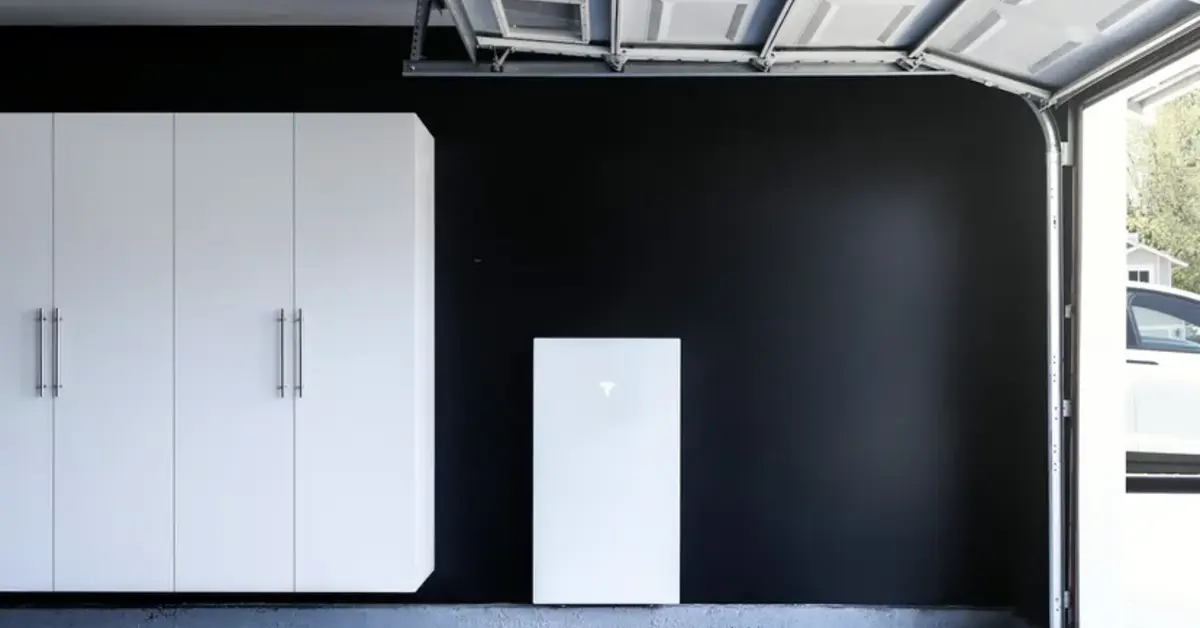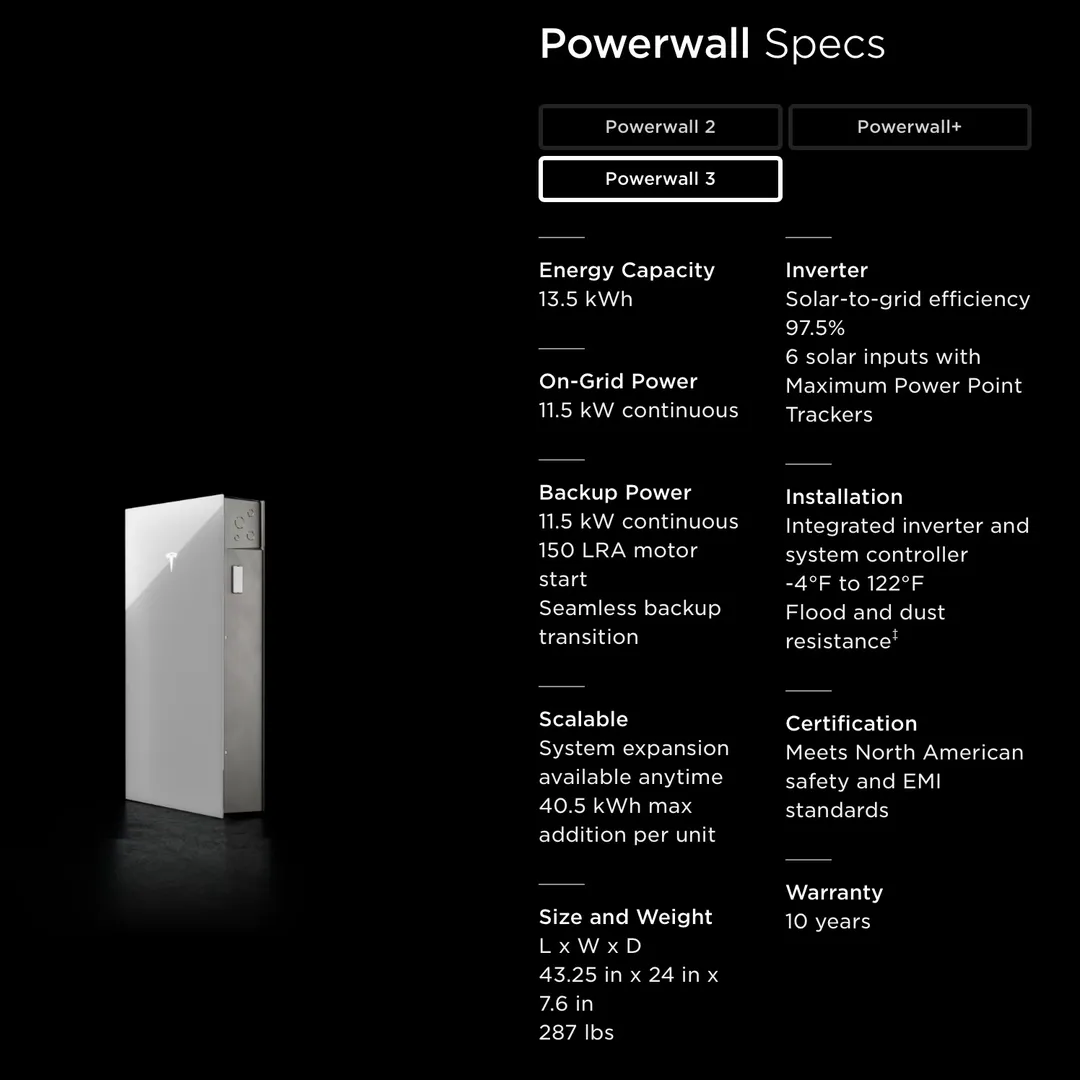Tesla has unveiled the Powerwall 3, the latest addition to its home battery backup solutions, scheduled for release in 2024. Unlike its predecessor, the Powerwall 2, which primarily functioned as a battery storage system, the Powerwall 3 offers a significant upgrade. It not only provides improved power throughput but also features a built-in solar inverter. This integrated inverter allows for a more seamless and vertically integrated solution for homeowners looking to harness solar energy for their homes.

With the Powerwall 3, homeowners can benefit from enhanced energy storage and management capabilities. Tesla’s approach aims to simplify the process of adopting renewable energy solutions, making it more accessible and efficient for those interested in transitioning to sustainable power sources. By combining energy storage with solar conversion capabilities, the Powerwall 3 represents a step towards more comprehensive and streamlined home energy solutions.
1. Design and Appearance: The Powerwall 3 maintains the familiar squared-off slate design with a glossy white front, similar to the Powerwall 2. However, there’s a notable change in the front logo. Instead of the full “Tesla” logo, there’s now a prominent “T” logo, which may represent a more streamlined and modern branding approach.
2. Battery Capacity: The battery capacity of the Powerwall 3 remains at 13.5 kilowatt-hours (kWh), which is identical to the Powerwall 2. This means that it can store and provide up to 13.5 kWh of electrical energy, making it suitable for various home energy needs.
3. Installation Process: One of the key improvements with the Powerwall 3 is the installation process. While specific details about these improvements are not provided, it suggests that Tesla has worked on making it easier and more efficient for homeowners or installers to set up the Powerwall 3 as part of their home solar power system.
4. Visual Changes: In terms of aesthetics, the Powerwall 3 appears to have lost some of the visual appeal present in the Powerwall 2. The black finishes on the sides, which added a contrasting and sleek look to the previous model, seem to be absent in the Powerwall 3.
5. Built-in Solar Inverter: One significant change is the inclusion of a built-in solar inverter. This feature allows the Powerwall 3 to be more integrated into a home’s solar power setup. The inverter converts the DC electricity generated by solar panels into AC electricity for use in the home. This integration streamlines the installation process for new solar setups, making it more vertically integrated.
The Powerwall 3 seems to retain the core features of its predecessor while introducing improvements in installation ease and solar integration. It remains a valuable home battery backup solution for homeowners looking to store and use solar-generated energy efficiently.

Powerwall 3: Simplifying Solar Energy Storage
Powerwall 3 is poised to revolutionize the world of solar energy storage by eliminating the need for a third-party solar inverter for operation. Unlike its slightly more complex counterpart, the Powerwall Plus, which necessitates the installation of at least two components, Powerwall 3 offers a streamlined and hassle-free solution.
But the innovation doesn’t stop there. Powerwall 3 is designed for expansion, allowing multiple units to seamlessly combine their capacity, offering a remarkable 40.5kWh battery capacity when needed. This forward-thinking technology can accommodate up to six solar inputs and maintain a continuous power handling capability of 11.5kW. In comparison, the Powerwall Plus supports only four solar inputs, while the Powerwall 2 battery peaks at a capacity of 10kW.
ALSO READ: Boosting NASA’s UFO Investigations: The Case for Increased Budget Allocation
With Powerwall 3, Tesla is simplifying the way we harness and store solar energy, making it more accessible and efficient than ever before.
Compatibility and Availability: The Fine Print on Powerwall 3
While Powerwall 3 offers groundbreaking features, it comes with some limitations to consider. Notably, it does not seamlessly integrate with other battery solutions, including the previous-generation Powerwall 2, and it does not support compatibility with other solar inverters. Additionally, it remains uncertain whether Powerwall 3 can be seamlessly wired to existing solar panels, as Tesla’s FAQs on the Powerwall 3 page lack a comprehensive answer.
Despite the early sighting of a Powerwall 3 installation, Tesla enthusiasts eager to adopt this advanced energy storage solution will need to exercise patience. Although Tesla has officially unveiled Powerwall 3, it will not be available for order until the year 2024. So while the future of solar energy storage looks promising, those interested will have to wait a little longer to harness its full potential.
Compatibility and Availability: The Fine Print on Powerwall 3
Powerwall 3, Tesla’s latest innovation in solar energy storage, promises a more streamlined and efficient solution. Unlike its predecessor, Powerwall 2, it eliminates the need for third-party solar inverters, simplifying the installation process. This means homeowners can enjoy the benefits of solar energy storage without the complexity of additional components.
What sets Powerwall 3 apart is its expansion capabilities. Multiple units can be combined to create a remarkable 40.5kWh battery capacity, offering a robust energy storage solution. Moreover, Powerwall 3 can accommodate up to six solar inputs and handle a continuous power load of 11.5kW, surpassing the capabilities of previous models.
However, there are some limitations to consider. Powerwall 3 is not designed to work harmoniously with other battery solutions, including Powerwall 2, and it is not compatible with other solar inverters. Furthermore, it remains unclear whether Powerwall 3 can be easily integrated with existing solar panels, as Tesla’s FAQs do not provide a definitive answer.
Despite its promising features, Powerwall 3 will not be available for order until 2024, leaving eager adopters with a bit of a wait ahead. Nevertheless, Tesla’s commitment to advancing solar energy storage holds the potential to revolutionize how we harness and store renewable energy for a sustainable future.
While the highly-anticipated Powerwall 3 won’t be available until 2024, Tesla continues to offer complete energy solutions with its existing products, including Powerwall 2 and Powerwall Plus. These solutions cater to a variety of needs, whether you’re interested in solar panels or not. Tesla is even sweetening the deal by offering a $500 rebate for installations and registrations conducted between June 15th, 2023, and October 31st, 2023, but it’s worth noting that this rebate does not apply to Powerwall 3.
As Tesla prepares to roll out Powerwall 3, it enters a burgeoning home power backup market where it already enjoys a strong presence. While the pricing details for Powerwall 3 remain undisclosed, Tesla is expected to approach quotes with caution in 2024, likely aiming to avoid any potential legal issues that may arise. The competition in the home power backup market is heating up, and Tesla’s innovative solutions are sure to play a significant role in shaping its future.









